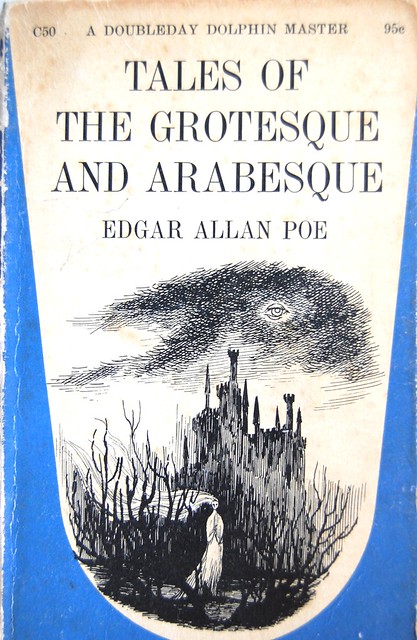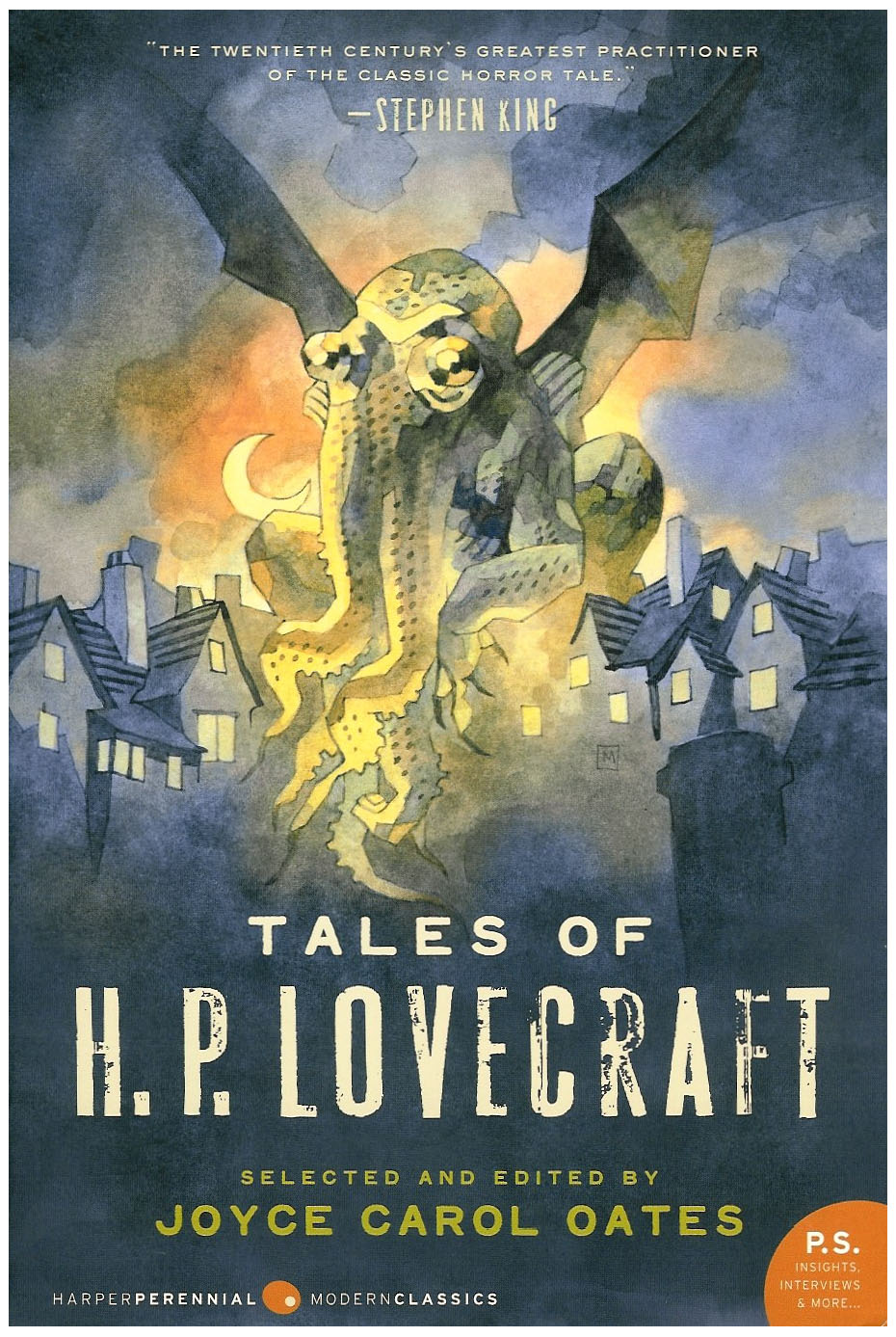Teaching and Fantasy Literature: The Strange and Mysterious Unit
 I’m secretly haunting an 8th grade English class at Hammarskjold Middle School. I tutor some students who are in the same class, so I get to see their teacher’s assignments, comments on student writing, and most recently, study guides for midterm exams. I glimpse the teacher through the fog of my physical absence from the classroom–I even forget from week to week whether the teacher is a man or a woman–but traces of my spectral influence may be detectable in my students’ work.
I’m secretly haunting an 8th grade English class at Hammarskjold Middle School. I tutor some students who are in the same class, so I get to see their teacher’s assignments, comments on student writing, and most recently, study guides for midterm exams. I glimpse the teacher through the fog of my physical absence from the classroom–I even forget from week to week whether the teacher is a man or a woman–but traces of my spectral influence may be detectable in my students’ work.
Did the teacher allow himself a moment to enjoy the name he gave his last series of assignments? Every time I looked at his study guide and saw his sentences about “the strange and mysterious unit,” it cracked me up. Of course, he was referring in a straightforward, lower-case-letters way to a packet of short stories by Poe, Asimov, and Lovecraft that centered around strange and mysterious incidents. I, however, pictured a battered, much photocopied document that emanated a cloud of green miasma and the wail of a theremin, with voiceover narration: No middle school teacher would ever be the same after she attempted to teach…the Strange and Mysterious Unit! Cue thunder and lighting.
I don’t know whether the Strange and Mysterious Unit has affected the way anybody else thinks about fiction, but it’s clarified my thinking about conflict in tales of the fantastic.
The biggest part of my students’ midterm study guide was a several-page table to fill out, with the stories’ titles along the vertical axis and a set of questions along the horizontal: Who are the characters? What is their conflict? How is the conflict resolved? So far, so good.
To my surprise, none of my students could recall without help the three commonly taught types of conflict in fiction: man against man, man against nature, man against himself. It was clear enough they’d been taught about that stuff the previous year, yet in this unit whose exam was to focus on conflict, the topic hadn’t come up in class discussions. If only I could see more clearly into the world of the classroom from the otherworld of my students’ kitchen tables, I might understand why it didn’t. Because this trio of terms was the framework for discussing conflict that my students and I had in common, that was what we used to puzzle our way through the study guide.
But something didn’t fit.
 Can you say a story has man-against-nature conflict if the whole point of the antagonist’s behavior is that it conspicuously violates the laws of nature? I suppose you could in Lovecraft’s work, where protagonist after protagonist goes mad after discovering that the laws of nature are not what he previously thought they were–the resolution is that he comes to know the true laws of nature, and they defeat him. However, the unnatural forces that play in some Poe stories may represent death, nature’s brutal joke on us all, but within the worlds of the stories themselves, something else is going on.
Can you say a story has man-against-nature conflict if the whole point of the antagonist’s behavior is that it conspicuously violates the laws of nature? I suppose you could in Lovecraft’s work, where protagonist after protagonist goes mad after discovering that the laws of nature are not what he previously thought they were–the resolution is that he comes to know the true laws of nature, and they defeat him. However, the unnatural forces that play in some Poe stories may represent death, nature’s brutal joke on us all, but within the worlds of the stories themselves, something else is going on.
Consider The Black Cat. Okay, yes, the narrator is unreliable, and we are free to decide what we think really happened (for values of the word really that apply to fictional characters). Still, within the story the narrator tells, he is up against two implacable forces: his own monstrous addiction, and the supernaturally inescapable consequences of his cruelty to an animal. Even if we imagine the story as a fiction written by a fiction, one of the story’s conflicts is with something that is neither human nor natural.
 It turns out I’m not the first person to think the old three-type model of conflict was insufficient, nor am I the first person to add Man against the Supernatural to the mix. (I would love to know who the first person was. The Internet seems to think it was Jessica Page Morrell in her book Thanks but This Isn’t for Us: A (Sort of) Compassionate Guide to Why Your Writing Is Being Rejected, a book that may make it into my intermittent series of posts here on books about writing.) Two things puzzle me: Why didn’t I think of it before? And, considering that it seems so obvious in retrospect and seems to have been independently arrived at by multiple people, why isn’t it already part of how schools teach the literature of the fantastic? The English teachers of the world may have divided opinions about secondary-world fantasists like Tolkien, but they seem to have considerable enthusiasm for Poe.
It turns out I’m not the first person to think the old three-type model of conflict was insufficient, nor am I the first person to add Man against the Supernatural to the mix. (I would love to know who the first person was. The Internet seems to think it was Jessica Page Morrell in her book Thanks but This Isn’t for Us: A (Sort of) Compassionate Guide to Why Your Writing Is Being Rejected, a book that may make it into my intermittent series of posts here on books about writing.) Two things puzzle me: Why didn’t I think of it before? And, considering that it seems so obvious in retrospect and seems to have been independently arrived at by multiple people, why isn’t it already part of how schools teach the literature of the fantastic? The English teachers of the world may have divided opinions about secondary-world fantasists like Tolkien, but they seem to have considerable enthusiasm for Poe.
Maybe it’s more than a harried middle school teacher should have to ask of his students that they recognize a distinction between the conflict as experienced by the characters and the conflict as analyzed by the reader: within the story, it’s man against the supernatural, but what we perceive under a layer of symbolism is man against himself, or whatever. Maybe it opens a can of political worms to introduce a category called man against the supernatural, which might lump ghost stories with God stories. Maybe it makes people uneasy to give too much acknowledgement to the fears and hopes that bubble up in stories of the supernatural (for more on which see Matthew David Surridge’s recent post on Shirley Jackson’s classic tale of psychological horror, The Haunting of Hill House).
I don’t know why the old tripartite division persists. I do know that the way I teach about conflict in fiction changed permanently this week, thanks to (Cue the theremin player!) The Strange and Mysterious Unit.
Sarah Avery’s short story “The War of the Wheat Berry Year” appeared in the last print issue of Black Gate. A related novella, “The Imlen Bastard,” is slated to appear in BG‘s new online incarnation. Her contemporary fantasy novella collection, Tales from Rugosa Coven, follows the adventures of some very modern Pagans in a supernatural version of New Jersey even weirder than the one you think you know. You can keep up with her at her website, sarahavery.com, and follow her on Twitter.